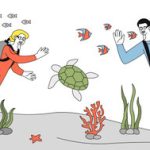1. Understanding the Impact of Pollution on U.S. Waterways
Americas rivers, lakes, and oceans are some of the most beautiful and diverse ecosystems in the world. But pollution is putting them at serious risk—and that affects everyone who loves to fish. Whether youre casting a line in a quiet mountain stream or trolling off the coast, clean water is essential for healthy fish populations and great fishing experiences.
Pollution can come from many sources, including litter left behind by people, chemical runoff from farms and factories, and even microplastics that are nearly invisible to the eye. Over time, these pollutants damage habitats, reduce fish numbers, and make it harder for anglers to enjoy their favorite pastime.
Why Should Anglers Care?
As someone who enjoys the outdoors and respects nature, you already understand the importance of keeping our waterways clean. But heres how pollution directly affects your fishing trips:
| Type of Pollution | Impact on Fish | Impact on Anglers |
|---|---|---|
| Plastic waste | Fish can ingest plastic or get tangled in it | Reduces fish populations and creates unsightly waters |
| Chemical runoff (e.g., fertilizers) | Causes algae blooms that deplete oxygen levels | Makes fishing areas unhealthy or closed off |
| Oil spills or fuel leaks | Toxic to aquatic life and disrupts ecosystems | Makes certain areas unsafe or unappealing to fish in |
The Role of Anglers in Protecting Waterways
Anglers are out on the water more than most people. That means they’re often the first to notice changes in water quality or signs of pollution. By being aware and taking small steps to reduce their own environmental impact, anglers can play a big role in preserving these natural spaces for future generations.
A Shared Responsibility
Protecting U.S. waterways isn’t just up to environmental groups or government agencies—it’s something we all need to work on together. And as anglers who rely on clean water for great fishing, we have both a reason and an opportunity to lead by example.
2. Proper Disposal of Fishing Line and Tackle
Improperly discarded fishing gear is one of the leading causes of pollution in U.S. waterways. Old monofilament line, broken hooks, and lost lures can stay in the environment for years, posing serious threats to fish, birds, and other wildlife. By learning how to properly dispose of these items, anglers can help protect natural habitats and keep our rivers, lakes, and oceans clean.
Why It Matters
Fishing lines made from monofilament or braided materials dont break down easily. They can entangle birds, turtles, or even marine mammals. Hooks and lures left behind may be swallowed by animals or cause injuries. Being a responsible angler means taking steps to avoid leaving any gear behind.
Best Practices for Disposing Fishing Line and Tackle
Here are some simple actions you can take to reduce your impact on the environment:
| Item | Proper Disposal Method |
|---|---|
| Monofilament Line | Use recycling bins found at marinas or tackle shops; never throw it in the trash or on the ground. |
| Braided Line | Cut into small pieces (under 6 inches) and place in the trash if no recycling is available. |
| Hooks | Store used hooks safely in a container; dispose in a sealed container to prevent injury to sanitation workers. |
| Lures | If damaged beyond use, discard in a safe trash bin; consider donating usable ones to youth programs or fishing clubs. |
Tips for Reducing Waste While Fishing
- Carry a small container or zip bag to collect used line and tackle while fishing.
- Look for monofilament recycling stations near boat ramps or piers.
- Educate young anglers about keeping nature clean and safe for everyone.
Did You Know?
The Berkley Fishing Line Recycling Program has recycled over 9 million miles of fishing line—that’s enough to circle the Earth more than 360 times! Participating in such programs makes a real difference.
By following these simple disposal tips, you’re not just helping wildlife—you’re ensuring that future generations can enjoy America’s incredible fishing spots too.

3. Using Eco-Friendly Gear and Bait
Choosing the right gear and bait can make a big difference in protecting our lakes, rivers, and coastal waters. By using eco-friendly options, anglers can reduce pollution and help preserve fish habitats for future generations.
Why Eco-Friendly Gear Matters
Traditional fishing gear often contains materials like lead, plastic, or synthetic fibers that can harm wildlife and pollute waterways if lost or discarded. Eco-friendly gear is made with sustainable or biodegradable materials that break down safely in the environment.
Sustainable Fishing Gear Options
Here are some examples of environmentally friendly alternatives to traditional gear:
| Traditional Gear | Eco-Friendly Alternative | Benefits |
|---|---|---|
| Lead sinkers | Tungsten, bismuth, or steel sinkers | Non-toxic to birds and aquatic life |
| Nylon fishing line | Biodegradable fishing line | Breaks down faster in nature |
| Plastic lures | Lures made from natural rubber or wood | Less harmful if lost in water |
Environmentally-Safe Bait Choices
The type of bait you use also affects the health of local ecosystems. Some live baits can introduce invasive species or diseases if not handled properly. Consider these safer options:
- Use native bait species: Stick to worms, insects, or minnows that are common in your area.
- Avoid dumping unused bait: Never release leftover live bait into the water; it can disrupt the ecosystem.
- Try artificial bait: High-quality artificial lures last longer and don’t carry parasites or diseases.
Quick Tips for Eco-Conscious Anglers
- Check labels for “lead-free” or “biodegradable” tags when buying gear.
- Store old line and tackle properly—never leave them behind.
- Support brands that focus on sustainability and conservation.
By making small changes to your gear and bait choices, you’re doing your part to keep America’s waterways clean while still enjoying the sport you love.
4. Cleaning Up After Yourself and Others
One of the simplest yet most effective ways anglers can help protect U.S. waterways is by cleaning up after themselves—and even going the extra mile to pick up litter left by others. A clean shoreline not only looks better but also helps protect fish, wildlife, and water quality.
Pack Out What You Pack In
Whether youre fishing from a boat, dock, or the shore, always take your trash with you. That includes food wrappers, bait containers, fishing line, and any other gear you brought along. Leaving waste behind can harm wildlife and pollute the water.
Essential Items for Trash Clean-Up
| Item | Purpose |
|---|---|
| Trash bags | For collecting your own trash and any litter you find |
| Gloves | To safely handle waste without getting dirty or injured |
| Small container or ziplock bag | For used fishing line or small plastic items |
Organize a Shoreline Cleanup
If you want to make a bigger impact, consider organizing a local cleanup event. Invite friends, fellow anglers, or even local community groups to join in.
Steps to Organize a Cleanup:
- Pick a location that needs attention—like a popular fishing spot or boat launch area.
- Get permission from local authorities if needed.
- Bring enough supplies like gloves, trash bags, and recycling bins.
- Sort trash and recyclables properly after the event.
You can even partner with local tackle shops or conservation groups to sponsor the event or provide giveaways for volunteers.
Be a Role Model on the Water
Your actions speak louder than words. When others see you picking up trash—even if it’s not yours—they’re more likely to do the same. Teaching younger anglers about respecting nature and keeping our waters clean helps build lifelong habits that benefit everyone.
Simple things like reminding your fishing buddies to grab their trash or helping someone pick up loose fishing line can go a long way in creating a cleaner environment for all outdoor enthusiasts.
5. Supporting Conservation Efforts and Local Policies
Anglers play a big role in protecting the waters they love to fish. By supporting conservation efforts and following local policies, you help keep lakes, rivers, and coastlines clean for future generations. It’s not just about catching fish—it’s about preserving the environment that supports them.
Get Involved with Clean Water Initiatives
Many organizations across the U.S. focus on cleaning up waterways and restoring habitats. Anglers can volunteer for cleanup events, donate to conservation groups, or even help raise awareness through social media. Here are some popular programs you can look into:
| Organization | Focus Area | How Anglers Can Help |
|---|---|---|
| Trout Unlimited | Coldwater fisheries & stream restoration | Join local chapters, attend events, volunteer for habitat projects |
| Keep America Beautiful | Litter prevention & community cleanups | Participate in cleanup days at your local lake or river |
| Costa Cleanups | Marine debris removal | Help with beach cleanups and plastic reduction awareness |
Follow Local Fishing Regulations
Each state has its own fishing rules designed to protect fish populations and habitats. These include size limits, catch-and-release guidelines, and seasonal closures. Staying informed and following these rules helps ensure there are healthy fish stocks for everyone.
Where to Find Regulations:
- Your state’s Department of Fish and Wildlife website
- Fishing license booklets or apps provided by state agencies
- Signs posted at boat ramps and public fishing areas
Support Fisheries Management Programs
Your fishing license fees often go directly toward conservation programs. These include fish stocking, habitat restoration, water quality monitoring, and more. You can also support special initiatives like invasive species control or endangered species recovery efforts.
Ways to Contribute Beyond Buying a License:
- Buy special stamps (like trout or salmon stamps) that fund targeted projects
- Report tagged fish or invasive species sightings to local authorities
- Take part in citizen science programs that track water health or fish movement
When anglers take action beyond the waterline—through advocacy, education, and community participation—they become powerful allies in keeping U.S. waterways clean and thriving.


